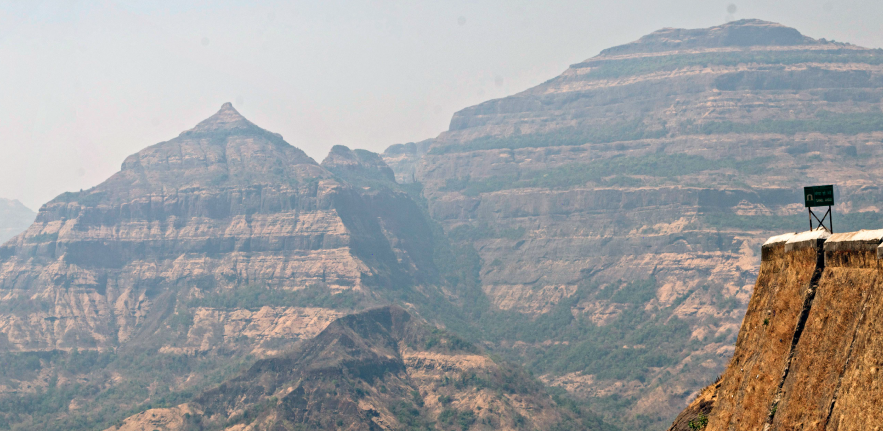
Submitted by Dr C.M. Martin-Jones on Tue, 30/03/2021 - 08:47
Researchers have uncovered evidence suggesting that volcanic carbon emissions were not a major driver in Earth’s most recent extinction event.
Earth has experienced five major extinction events over the last 500 million years, the fifth and most recent responsible for wiping out the dinosaurs 66 million years ago. Massive volcanic eruptions have been identified as a major driver in the environmental change which triggered at least three of these extinctions.
But what dealt the final blow to the dinosaurs – whether an enormous outpouring of lava from the Deccan Traps volcanic province in India or a large asteroid impact, or perhaps a combination of the two – has remained open to debate.
Now, a multi-institutional research team, led by scientists from The Graduate Center, CUNY, and involving the University of Cambridge, has, for the first time, accurately pinpointed the timing and amount of carbon released from Deccan Traps volcanic province. The new data means scientists can now assess the role of volcanism in climate shifts around the End-Cretaceous mass extinction.
The team’s data show that CO2 outgassing from Deccan Traps magmas can explain a warming of Earth’s global temperatures by roughly 3 degrees Celsius during the early phases of Deccan volcanism, but shows that the warming had lessened by the time of the mass extinction event.
Their findings support the theory that later Deccan magmas were not releasing that much CO2, suggesting that volcanic carbon emissions didn’t play a major role in the dinosaur’s extinction.
“The results are important because they show that major volcanic events can release substantial amounts of CO2 not just from surface vents, but also from the large and complex plumbing systems that feed them. Even though volcanic carbon emissions alone couldn’t have triggered the mass extinction, our data highlights their influence on our planet's climate and habitability,” said Cambridge’s Professor Sally Gibson, who was involved in the newly published research.
The team had to search through hundreds of Deccan lava samples to identify suitable candidates to profile for their trapped CO2 content. “In modern volcanic eruptions, such as the current one in Iceland, the CO2 is trapped in crystals that are embedded in glassy fragments of rapidly cooled magma, but these are fragile and not preserved in the 65 million year old Deccan Traps,” said Gibson.
Recent research has identified a global warming event that occurred several hundred thousand years before the End-Cretaceous extinction. Some scientists have linked the eruption of the Deccan Traps to this warming event, but there is debate over whether the lavas that erupted could have released enough CO2 into the atmosphere to cause it. Adding to this mystery, the lava volumes that erupted during this time are relatively small compared to the volumes erupted during subsequent stages of Deccan Traps activity. A major challenge in this debate has been the lack of CO2 data on Deccan magmas from this time.
“The new data highlights that carbon outgassing from lava volumes alone couldn’t have caused that level of global warming. But, when we factored in outgassing from magmas that froze beneath the surface rather than erupting, we found that the Deccan Traps could have released enough CO2 to explain this warming event,” said lead-author Andres Hernandez Nava, a Ph.D. student in The Graduate Center, CUNY Earth.
For their study, the team used lasers and beams of ions to measure the amount of CO2 inside of tiny droplets of frozen magma trapped inside Deccan Traps crystals from the End Cretaceous time period. They also measured the amounts of other elements, such as barium and niobium, which are indicators for how much CO2 the magmas started out with. Finally, they performed modeling of latest Cretaceous climate to test the impacts of Deccan Traps carbon release on surface temperatures.
“Our lack of insight into the carbon released by magmas during some of Earth’s largest volcanic eruptions has been a critical gap for pinning down the role of volcanic activity in shaping Earth’s past climate and extinction events,” said Benjamin Black, the study’s principal investigator and a professor in the Earth and Environmental Science program at The Graduate Center CUNY and City College of New York. “This work brings us closer to understanding the role of magmas in fundamentally shaping our planet’s climate, and specifically helps us test the contributions of volcanism and the asteroid impact in the end-Cretaceous mass extinction.”
Hernandez Nava et al. Reconciling early Deccan Traps CO2 outgassing and pre-KPB global climate. PNAS (2021). DOI : 10.1073/pnas.2007797118
Adapted from a press release by The Graduate Center, CUNY.
